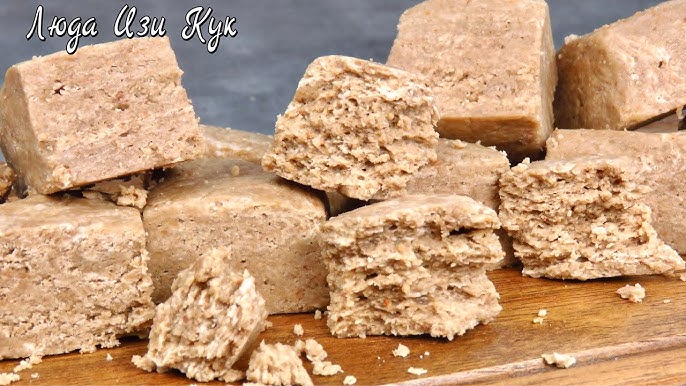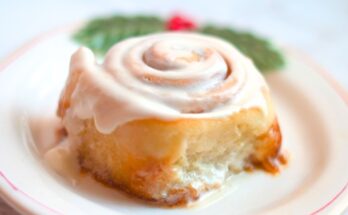Halva Recipe: Halva, a rich and delightful dessert, is a staple in many cultures across the Middle East, South Asia, and Eastern Europe. Despite regional differences in ingredients and preparation methods, the name “halva” generally refers to a dense, sweet confection. One of the most popular variations is the semolina-based halva, known for its nutty flavor and soft, slightly grainy texture.
Semolina halva, or “Suji Halwa” in India, is traditionally made with semolina (also known as suji or rava), sugar, ghee (clarified butter), and water or milk. What makes halva truly special is the way the ingredients are toasted and then slowly simmered together, creating a luxurious texture and deep flavor. It’s commonly served during festivals, religious ceremonies, or as a comforting sweet treat for everyday indulgence.
The Origin and Cultural Significance of Halva
Halva boasts a fascinating history, with its roots stretching back over a thousand years. The word “halva” comes from the Arabic word “ḥalwā,” meaning “sweet.” Over the centuries, the dish has traveled far and wide, evolving into various regional adaptations. For instance, tahini halva is common in the Middle East, while in India and Pakistan, semolina halva reigns supreme.
This dessert plays a significant role in religious and cultural ceremonies. In Hindu rituals, it’s often prepared as prasad (a sacred offering), while in Muslim communities, halva is a comforting food during Ramadan. The simplicity of its ingredients belies the depth of its tradition and versatility.
Ingredients You’ll Need
Basic Ingredients
Here’s a list of the core ingredients you need for a classic semolina halva:
- 1 cup semolina (suji/rava) – The star of the dish, gives it texture and body.
- 3/4 cup sugar – Adjust to taste for desired sweetness.
- 1/4 cup ghee (clarified butter) – Essential for richness and nutty flavor.
- 2 cups water or milk – Helps in cooking and softening the semolina.
- 1/4 teaspoon cardamom powder – For that warm, aromatic touch.
These ingredients create the traditional version, but feel free to adjust quantities or substitute based on dietary needs.
Optional Add-ins for Enhanced Flavor
Want to level up your halva? These optional ingredients can add a delightful twist:
- Chopped nuts (almonds, cashews, pistachios) – Add crunch and richness.
- Raisins or dried fruits – Provide bursts of sweetness and texture.
- Saffron strands – For a luxurious touch and vibrant color.
- Rose water or kewra essence – To infuse exotic floral notes.
By incorporating these add-ins, you can tailor your halva to suit different preferences, occasions, or even dietary requirements.
Kitchen Tools Required
Essential Cooking Utensils
To make halva efficiently, you’ll need a few kitchen basics:
- Heavy-bottomed pan or kadai – Prevents the semolina from burning.
- Wooden spoon or spatula – For stirring without damaging the pan.
- Measuring cups and spoons – Ensures ingredient accuracy.
- Small saucepan – For preparing sugar syrup separately.
- Serving dish – To present the halva beautifully.
Having the right tools can make your cooking smoother and ensure the halva’s texture comes out just right.
Tips for Preparation
Before you start, here are a few pro tips:
- Roast semolina on low heat – This brings out its nutty flavor without burning.
- Warm the liquid – Whether you use water or milk, preheat it before combining to prevent splattering.
- Stir constantly – Halva requires attention; keep stirring to avoid lumps.
- Use fresh ghee – This impacts the final taste more than you might think.
- Pre-chop ingredients – Like nuts or dried fruits, so you’re not scrambling mid-cooking.
Preparation is key to making a perfect halva without stress or mess.
Step-by-Step Halva Recipe
Step 1 – Preparing the Ingredients
Before you turn on the stove, prep everything. Measure out your semolina, sugar, ghee, and water or milk. If you’re adding nuts, chop them up. If you’re using saffron, soak it in a tablespoon of warm milk. This prep work makes the actual cooking seamless and quick.
You don’t want to be measuring while your semolina is toasting or trying to chop nuts while your syrup is boiling. Set everything in place – this little bit of organization goes a long way.
Step 2 – Roasting the Semolina
In a heavy-bottomed pan, heat the ghee over medium flame. Once melted, add semolina and roast it slowly. Keep stirring continuously. You’ll notice it start to change color – from pale cream to a rich golden hue. The aroma will also become nutty and fragrant.
This roasting step takes around 8-10 minutes. It’s crucial because it removes the raw taste and builds the flavor base for your halva. Be patient, don’t rush or raise the heat – a burnt semolina can ruin the entire batch.
Step 3 – Making the Sugar Syrup
While your semolina is roasting, let’s prepare the sugar syrup. In a separate saucepan, combine 3/4 cup of sugar with 2 cups of water (or milk for a creamier texture). Place it over medium heat and stir until the sugar dissolves completely. You can also add cardamom powder and saffron strands at this stage to infuse the syrup with rich flavor and aroma.
Once the sugar has dissolved, let the syrup come to a gentle boil, then reduce the heat. You don’t want a thick syrup—just a flavored, sweet liquid that will blend smoothly with the roasted semolina. If you’re using rose water or kewra essence, add it now and turn off the heat. Your syrup is now ready to be added to the semolina.
Pro Tip: Always be cautious when adding syrup to semolina—it can splatter due to the temperature difference, so pour slowly and keep your hands protected.
Step 4 – Combining Semolina and Syrup
Now that your semolina is perfectly roasted and the syrup is ready, it’s time to bring them together. Slowly pour the hot sugar syrup into the pan with roasted semolina while stirring continuously. This step demands your full attention. As soon as the syrup hits the semolina, it will bubble up and start thickening almost immediately.
Keep stirring to avoid lumps and ensure even absorption of the syrup. You’ll notice the mixture thickening and coming together into a smooth, cohesive mass. If you added nuts or raisins, toss them in now and fold them gently into the mixture.
This part takes about 3-5 minutes, and the halva should start pulling away from the sides of the pan. That’s your cue that it’s nearly done.
Step 5 – Cooking to Perfection
Let the mixture cook for a few more minutes on low heat. This final stage helps evaporate any excess moisture and enhances the depth of flavor. Stir occasionally to prevent sticking or burning at the bottom. Once the halva has reached a soft but firm consistency and is no longer sticking to the pan, it’s ready to serve.
You can now transfer it into a greased dish or mold, pressing it down evenly with a spatula. If you’re going for a rustic presentation, serve it directly from the pan. Garnish with extra chopped nuts or a few strands of saffron for a beautiful finish.
Let it rest for a few minutes before serving. This helps the halva set slightly and makes it easier to portion. Enjoy your delicious, homemade halva that’s rich, aromatic, and absolutely comforting.
Serving Suggestions and Storage Tips
How to Serve Halva
Halva is best enjoyed warm, especially when freshly made. It pairs beautifully with a hot cup of tea or coffee. If you’re serving it at a gathering or festive event, consider garnishing each portion with slivered almonds or edible silver leaf for an elegant touch.
You can also shape halva into small balls or use molds for individual servings, making it look like a gourmet dessert. During religious events or offerings, halva is typically served in small bowls or as part of a thali (platter) with puris and savory sides.
Halva can be served:
- As a standalone dessert.
- With poori as a part of a traditional Indian breakfast.
- Chilled in the fridge for a firmer texture.
Storing Leftover Halva
If you have leftovers, halva stores exceptionally well. Here’s how to keep it fresh:
- Room Temperature: It will stay good for 1-2 days if kept covered.
- Refrigerator: Store in an airtight container for up to a week. You can reheat it in a microwave or on a stovetop with a splash of milk or water.
- Freezing: Yes, halva freezes well. Portion it out and wrap tightly. Thaw and warm gently before serving.
Avoid storing halva uncovered as it tends to dry out. Always use clean utensils to scoop it out, especially if you’re planning to keep it for several days.
FAQs about Halva Recipe
Q1: What is halva made of?
Halva is typically made from a base of tahini (sesame paste) or semolina, combined with sugar or honey. Some variations also include nuts, dried fruits, or spices like cardamom or cinnamon.
Q2: Is halva healthy?
Halva can be nutritious in moderation. Tahini-based halva is rich in healthy fats, calcium, and protein. However, it also contains a high amount of sugar, so it’s best enjoyed as an occasional treat.
Q3: Can I make halva without tahini?
Yes! You can make semolina halva using semolina flour, ghee or butter, sugar, and water. It’s a popular version in Indian and Middle Eastern cuisines.
Q4: How long does homemade halva last?
When stored in an airtight container at room temperature, halva can last up to 1 week. In the refrigerator, it can stay fresh for about 2–3 weeks.
Q5: Can halva be frozen?
Yes, you can freeze halva. Wrap it tightly in plastic wrap and store in a freezer-safe container for up to 3 months. Thaw it in the fridge before serving.
Q6: Why is my halva crumbly?
If your halva is too crumbly, it may be due to overcooking or using too little liquid. For a smoother texture, ensure the sugar syrup is properly absorbed and not overcooked.
Q7: What’s the difference between tahini halva and semolina halva?
Tahini halva is denser and more fudge-like, while semolina halva has a softer, grainy texture. The ingredients and cooking methods differ, giving each type its own unique flavor.
Q8: Can I add flavors to halva?
Absolutely! You can enhance your halva with vanilla, rose water, cocoa powder, nuts, or even dried fruits to suit your taste.
Q9: Is halva gluten-free?
Tahini-based halva is naturally gluten-free. However, semolina halva contains wheat, so it is not suitable for gluten-free diets.
Q10: Can vegans eat halva?
Most tahini halva recipes are vegan-friendly since they don’t include dairy or animal products. Always check ingredients or labels if buying pre-made halva.
Conclusion
The key lies in roasting the semolina patiently, balancing the sweetness, and infusing the right flavors. Once you get the hang of it, you can experiment endlessly—try adding coconut, chocolate, or even fruits to put your unique spin on it.
So the next time you’re craving something sweet, skip the store-bought desserts and whip up a batch of homemade halva. It’s rich, rewarding, and sure to win hearts.



